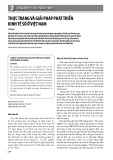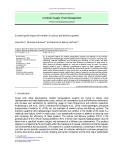
P-ISSN 1859-3585 E-ISSN 2615-9619 https://jst-haui.vn ECONOMICS - SOCIETY Vol. 60 - No. 11E (Nov 2024) HaUI Journal of Science and Technology
147
THE IMPACT OF BIG DATA ANALYTICS CAPABILITY ON INNOVATION CAPABILITY: THE MEDIATING ROLE OF TOTAL MARKET ORIENTATION
Phan Quoc Nghia1,*, Phan Kim Tuyen2 DOI: http://doi.org/10.57001/huih5804.2024.353 ABSTRACT With firm-wide big data analytics capability growing
rapidly, academics
and practitioners have been considering the mechanism through which big
data analytics capability can leverage innovation capability. This article
analyzes the influence of big data analytics capability on both two types of
innovation ca
pability: incremental and radical, with the mediating role of
total market orientation. The analyzed data are responses from 363 senior
managers in an emerging economy: Vietnam. The significant results reveal
that big data analytics capability enhances tot
al market orientation and this,
in turn, affects innovation capability. Thus, the findings reveal the important
mediating role of total market orientation on the link between big data
analytics capability and innovation capability. The findings are to impr
ove our
knowledge of big data analytics capability and innovation capability and
ensure finding the best resolutions for investing in enhancing big data
analytics capability. Keywords:
Big data analytics capability (BDAC), Total market orientation
(TMO), Innovation capability (IC). 1School of Management (SOM), Asian Institute of Technology (AIT), Thailand
2 PhD Candidate, Lac Hong University, Vietnam *Email: phanquocnghia@gmail.com Received: 10/5/2024 Revised: 21/7/2024 Accepted: 28/11/2024 1. INTRODUCTION As a side effect of digital transformation, huge amounts of data of all kinds are being generated at a rapid pace. This data is called big data. The rise of data as a profit-making resource has stimulated businesses to use it to innovate. Big data analytics accelerate the time to market for new products and services as information extracted from big data sources offers clear opportunities to gain new insights, make more informed decisions, and meet new market demands. An examination of how businesses can link the valuable insights of big data for innovation is necessary to refine the key elements for businesses to succeed in the digital age. Based on the theory of the resource-based view and dynamic capabilities view, this study investigates the significant relationships between big data analytics capability (BDAC) and innovation capability (IC), with the mediating role of total market orientation (TMO). Wernerfelt [17] introduced the phrase “resource-based view” and advocated looking at resources from a different angle than how they relate to a firm’s strengths and weaknesses. For example, firms may be able to identify certain resource types that can result in great profits or create novel resources to capitalize on improved performance. Wernerfelt did not specifically mention big data, but he could have argued that businesses could use the analyzed data to boost performance. The firm’s resources had four attributes: Valuable, Rare, Inimitability, and Non-substitutability or VRIN. Dynamic capabilities (or core capabilities if used interchangeably) is the firms’ ability to build, expand, or change their resource base in a targeted manner. The dynamic capabilities view, therefore, suggests that firms need to consolidate and restructure their capabilities and resources, and update or change resource mixes to response to environmental changes. Big data analytics capability (BDAC) is defined as the ability of a firm to capture and analyze data to generate insights by effectively deploying its data, technology, and talent through firm-wide processes, roles, and structures [3, 9, 16]. Reviewing the literature on BDAC reveals the following. First, although previous studies have described BDAC in general, within an organization there is

ECONOMICS - SOCIETY https://jst-haui.vn HaUI Journal of Science and Technology Vol. 60 - No. 11E (Nov 2024)
148
P
-
ISSN 1859
-
3585
E
-
ISSN 2615
-
961
9
inadequate knowledge of how different BDAC resources affect different types of data analysis [6]. Second, BDAC has other interesting topics, such as integrating BDAC into an organization’s business processes and developing an organization’s data-driven culture [6]. Third, the literature to date has recognized different antecedents and consequences, but there is a lack of empirical evidence of how different BDAC resources interact for different consequences under total market orientation. This is an important and interesting topic as it allows organizations to clearly understand the structure and purpose of BDAC. Moreover, it helps to clarify the mechanisms that explain how different combinations of BDAC resources lead to different consequences. Forth, current literature regarding innovation may not clarify or fill the gap in the context of Vietnam companies, which operate in a multifaceted global environment and international commercial community. Thus, it is significant to investigate the effect of BDAC on IC with the mediator of TMO in Vietnam’s emerging economy. This article presents a conceptual model to examine the influence of big data analytics capability on both two types of innovation capability: incremental and radical, with the mediating role of total market orientation. Building on the resource-based view and dynamic capabilities view of the firm, we argue that big data analytics capability enables firms to generate insight that helps them strengthen their total market orientation, which in turn positively impacts their innovation capability. In effect, this article attempts to shed some light on the two research questions: “What is the influence of big data analytics capability (tangible resources, human resources, and intangible resources) on total market orientation (both proactive and responsive)?” and “What is the influence of total market orientation (both proactive and responsive) on innovation capability (both incremental and radical)?”. The analyzed data are responses from 363 senior managers in Vietnam’s emerging economy. Structural equation modelling (SEM) was employed to examine the relationships in the proposed research model. The critical results reveal that big data analytics capability enhances total market orientation and this, in turn, affects innovation capability. Thus, the findings reveal the important mediating role of total market orientation on the link between big data analytics capability and innovation capability. The findings are not only to improve our knowledge of big data analytics capability and innovation capability but also to ensure finding the best resolutions for investing in enhancing big data analytics capability. The research also helps both academics and professionals to turn their attention to big data analytics capability that reflects the efficiency and effectiveness of innovation. 2. THEORETICAL BACKGROUND AND HYPOTHESES DEVELOPMENT Empirical studies have shown that firms using big data-generated insights are in a better position to identify emerging threats and opportunities. In addition, big data analytics shows that combining different data sources can identify new business opportunities and can even allow for the generation of previously unknown insights. 2.1. Research model and hypotheses development Based on the resource-based view (RBV), the dynamic capabilities view (DC), and the emerging literature on big data analytics, this article proposes that firm need a combination of tangible, human and intangible resources to build its big data analytics capability. This article argues that the value of big data analytics capability stems from its capacity to enhance total market orientation, which in turn positively affects both firm incremental and radical innovation capability. The article’s conceptual model is presented in Figure 1. Figure 1. Conceptual model 2.2 Big data analytics capability (BDAC) Big data analytics capability (BDAC) is defined as the ability of a firm to capture and analyze data to generate insights by effectively deploying its data, technology, and talent through firm-wide processes, roles, and structures [3, 9, 16]. Based on the fundamentals of RBV, DC and following the resource classification of Grant, the main resources that enable firms to develop a BDAC are divided into three main categories: tangible resources (data, technology, and other basic resources), human resources (managerial and technical big data skills) and

P-ISSN 1859-3585 E-ISSN 2615-9619 https://jst-haui.vn ECONOMICS - SOCIETY Vol. 60 - No. 11E (Nov 2024) HaUI Journal of Science and Technology
149
intangible resources (data-driven culture and organizational learning) [2]. 2.3. Innovation capability (IC) Menguc et al. classify innovative capability into two different dimensions, which are incremental innovation capability and radical innovation capability [8]. Incremental innovation capability is the competency of the firm to deliver product innovation that departs minimally from existing routines, operations, and knowledge. Radical innovation capability, on the other hand, is the ability to generate innovations that significantly transform the existing products and services and may involve breakthrough technology to produce discontinuous products and services. 2.4. Total market orientation (TMO) Narver et al. distinguish between two forms of market orientation, namely responsive and proactive market orientation [13]. The former refers to the concept of customer-led by addressing only customer-expressed needs and wishes. Therefore, companies are guided by their customers when making business decisions. The latter focuses on understanding the customer, including latent needs. Therefore, proactive market-oriented companies can not only be customer-led but also customer-led. Narver et al. showed that including a proactive market orientation significantly increases the explanatory power of the reactive market orientation on a company’s performance, and introduced the concept of “total market orientation” [12]. The basic idea is a positive interaction, and the two market orientations complement each other [15]. 2.5. Big data analytics capability and total market orientation One of the main advantages of big data analytics is the ability to perform computer-aided computations on a wide variety of unstructured data sources in much shorter cycle times. This ability to rapidly process data positively contributes to increasing the speed, effectiveness, and efficiency of insight generation, allowing us to make sense in terms of complexity and velocity. Additionally, BDAC enables companies to improve real-time resource allocation, better coordination, and dynamic asset movement. This dramatically reduces response time to new events, eliminates inefficiencies, reduces costs, and reduces business process bottlenecks. Finally, businesses can use the insights generated to learn more about previously successful or unsuccessful products, services, or marketing initiatives and redesign their respective capabilities accordingly. Market orientation is recognized as a business approach in which firms coordinate their activities and actions to produce desired value, and to meet customer needs. Market-oriented activities generally aim to identify customers and companies through the collection and interpretation of data. Information about customer needs, customer satisfaction, and service quality must be monitored and validated to achieve competitive advantage and improved performance. Therefore, using internet-based technologies (such as big data) to support market orientation has provided a sustainable competitive advantage. The recent emergence of big data is said to support market orientation and customer data collection efforts. Market orientation is nothing new, but the modern use of big data to support similar efforts is new today. In line with the above discussion, since BDAC can inhibit both proactive and responsive market orientation, this article proposes the following hypotheses. Hypothesis 1: Tangible resources (TR) positively affect proactive market orientation (PM). Hypothesis 2: Tangible resources (TR) positively affect responsive market orientation (RM). Hypothesis 3: Human resources (HR) positively affect proactive market orientation (PM). Hypothesis 4: Human resources (HR) positively affect responsive market orientation (RM). Hypothesis 5: Intangible resources (IR) positively affect proactive market orientation (PM). Hypothesis 6: Intangible resources (IR) positively affect responsive market orientation (RM). 2.6. Total market orientation and innovation capability Today’s market faces many challenges such as globalization, technological progress, increasing numbers of companies, and changing customer trends. To improve performance and grow steadily, companies are looking for alternative approaches and developing new strategies. Many studies in the literature show that market orientation is a useful way to improve performance and gain a competitive advantage [7]. Market orientation is closely linked to innovation. It is found that in a competitive world, organizations must cope with rapid technological change and rapidly changing customer demands. Market orientation plays

ECONOMICS - SOCIETY https://jst-haui.vn HaUI Journal of Science and Technology Vol. 60 - No. 11E (Nov 2024)
150
P
-
ISSN 1859
-
3585
E
-
ISSN 2615
-
961
9
an important role in the development of radical or incremental innovations. Market orientation provides a source of new and efficient source of thinking that leads to the introduction of new products and proposes improvements to prevailing products. Market orientation is a prerequisite for successful innovation. There are many empirical studies on the relationship between market orientation (e.g. both proactive and responsive market orientation) and firm innovation. In line with the above discussion, as total market orientation can inhibit both radical and incremental innovation capability, thus this article proposes the following hypotheses. Hypothesis 7: Proactive market orientation (PM) positively affects radical innovation capability (RI). Hypothesis 8: Proactive market orientation (PM) positively affects incremental innovation capability (II). Hypothesis 9: Responsive market orientation (RM) positively affects radical innovation capability (RI). Hypothesis 10: Responsive market orientation (RM) positively affects incremental innovation capability (II). 3. RESEARCH DESIGN 3.1. Sample Vietnam’s companies are currently often under intense pressure to integrate with international trade and the global economic system and modernize their products and services through innovation and technology as well as undergoing organizational reforms and transformations to become archetypes for innovation in the industry. The hypotheses are tested with the participation of respondents in Vietnam’s companies. These respondents had to have a good understanding of their company’s big data analytics infrastructure, business development, and innovation. Therefore, the ideal respondents are data managers, operations managers, business analysts, business executives, business development directors, business development managers, sales managers, marketing managers, and senior executives of companies practicing big data analytics in their units. Additional screening criteria used to create the final pool of potential respondents include: 1) Role within the organization (senior, middle, or junior management). 2) Expertise in big data (practicing big data analytics in the units and having experience in using internet technology for inter-firm communication). 3) Industry: Automobiles, Electronics, Food Processing/ Distributing, Packaging/ Plastic, Oil and Gas, Electricity/ Energy, Consuming Products, Pharmaceutical/ Chemical, Construction/ Manufacturing, and others. The proposed model is tested by performing a quantitative analysis through an online survey questionnaire. As a result, a sample of 862 potential respondents is selected based on a list of potential respondents who have practiced big data analysis in the unit. We received 363 completed answered questionnaires by the end of 2022. Among the respondents, 263 were men (72.5 percent), and 100 (27.5 percent) were women. Most of them (82.9 percent) had more than 10 years of working experience. The educational level of the respondents was mostly master’s degree (52.1 percent). Most of the respondents’ positions/ levels were in middle management (38.1 percent) and senior management (55.6 percent). Furthermore, most of the respondents had more than 10 years (54.0 percent) of working in the current organization. 3.2. Measures Big data analytics capability To develop a strong BDAC, a combination of all three types of resources needs to be invested in by the firm. Concerning tangible resources, data, technology, and other basic resources are noted as being fundamental to big data success [9]. These are basic resources (2-item scale), data (3-item scale), and technology (5-item scale). Concerning human skills, the literature recognizes that both technical and managerial-oriented skills are required to derive value from big data investments. These are technical skills (4-item scale) and managerial skills (4-item scale). Concerning intangible resources, data-driven culture and organizational learning are noted as being critical aspects of the effective deployment of big data initiatives [9]. These are data-driven culture (3-item scale) and organizational learning (4-item scale). A seven-point Likert scale, ranging from “strongly disagree (1)” to “strongly agree (7),” was used to record the respondents’ feedback. Total market orientation Items of a responsive market orientation were developed based on the scale developed by Jaworski & Kohli [5]; Narver & Slater [11]; Tournois [15]. Items for a proactive market orientation were developed based on

P-ISSN 1859-3585 E-ISSN 2615-9619 https://jst-haui.vn ECONOMICS - SOCIETY Vol. 60 - No. 11E (Nov 2024) HaUI Journal of Science and Technology
151
the scale developed by Narver et al. [13]; Tournois, [15]. A seven-point Likert scale, ranging from “strongly disagree (1)” to “strongly agree (7),” was used to record the respondents’ feedback. Innovation capability The measures for the two types of innovation capability were based on the discussions provided by [14]. Incremental innovation capability was measured with a 3-item scale assessing an organization’s capability to reinforce and extend its current expertise and product/service lines. Radical innovation capability was measured with a 3-item scale assessing an organization’s capability to make current product/service lines obsolete. A seven-point Likert scale, ranging from “strongly disagree (1)” to “strongly agree (7),” was used to record the respondents’ feedback. 4. RESULTS 4.1 Scale reliability analysis The results of Cronbach’s alpha were all greater than 0.70. Furthermore, there are only two constructs that had a value of being higher than 0.70, and the remainder were all above 0.80, suggesting very good internal consistency reliability. The Corrected item - Total correlation was all greater than 0.30 or even 0.50. In addition, the test showed the number of cases correctly without any negative values, indicating that the constructs were measured using the same underlying characteristic. This in effect meant that the data collected from the survey was valid and had very good interrelations. 4.2. Measurement model assessment We used AMOS software to do the path analysis. The results of the measurement model assessment were evaluated and yielded an acceptable level of fit (CMIN/DF = 1.660; GFI = 0.804; CFI = 0.923; TLI = 0.918; RMSEA = 0.043; PCLOSE = 1.000). The convergent validity can be tested in the measurement model by evaluating the variables’ loading on their respective constructs. The accepted cut-off value for item loading should be equal to or greater than 0.50 [4]. All variables had a significant loading greater than 0.50 at p < 0.001 on their respective factors. Regarding the indicator reliability, all variables had SQRTAVE values greater than Inter-Construct Correlations in Fornell & Larcker table. The values of composite reliability (CR) and average variance extracted (AVE) for all factors in the model were above the recommended value (CR > 0.70 and AVE > 0.50). Thus, the results in Table 1 indicated that the measurement model achieved substantial convergent validity and unidimensionality. Additionally, all the correlation coefficients between the constructs were less than 0.85, suggesting there was discriminant validity. Table 1. Convergent and discriminant validity of the measurement model Factors TR HR IR RM PM MT II RI Composite Reliability (CR) 0.905 0.922 0.898 0.884 0.884 0.811 0.896 0.831 Average Variance Extracted (AVE) 0.547 0.597 0.638 0.523 0.523 0.519 0.741 0.621 Maximum Shared Variance (MSV) 0.491 0.409 0.491 0.465 0.322 0.322 0.465 0.445 Square root of AVE (SQRTAVE) 0.740 0.772 0.799 0.723 0.723 0.720 0.861 0.788 Notes: TR: Tangible Resources; HR: Human Resources; IR: Intangible Resources; MT: Market Turbulence; II: Incremental Innovation; RI: Radical Innovation; RM: Responsive Market Orientation; PM: Proactive Market Orientation 4.3. Structural model assessment The results of the structural model produced by AMOS software were evaluated and yielded an acceptable level of fit, indicating that it has explanatory power (CMIN/DF = 1.770; GFI = 0.850; CFI = 0.936; TLI = 0.931; RMSEA = 0.046; PCLOSE = 0.945). Table 2 shows regression weights and standardized regression weights results. Table 2. Regression weights and standardized regression weights results Path Regression Weights Standardized Regression Weights Estimate S.E. C.R. P Estimate (β) PM
<--- TR 0.173
0.073
2.381
0.017
0.200
PM
<--- HR 0.204
0.057
3.580
0.000
0.250
PM
<--- IR 0.207
0.069
2.980
0.003
0.230
RM
<--- TR 0.044
0.065
0.678
0.498
0.055
RM
<--- HR 0.170
0.051
3.329
0.000
0.226

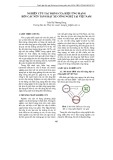

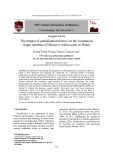
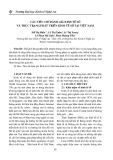
![Kinh tế số Việt Nam: Chính sách và thực thi [Cập nhật mới nhất]](https://cdn.tailieu.vn/images/document/thumbnail/2024/20241028/gaupanda058/135x160/4241730112118.jpg)
